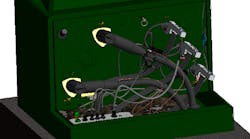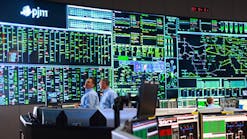It’s amazing the topics that come along with generic searches on the internet. I was researching corrective maintenance when I got a surprise. Have you ever heard of the “run-to-failure” maintenance strategy? Breakdown maintenance also popped up in the search listing, along with several other unexpected, related topics. These aren’t new ideas, on the contrary, they are very old-school responses for maintenance strategies.
I had really thought these policies had been made obsolete with the deployment of sensors and monitors producing big-data processed by big-data analytics. Clearly that isn’t the case. It turns out that not only are these schemes still around, but according to at least one report these practices are growing in popularity in many industries. For those unfamiliar with these terms, it’s fairly simple. The asset is operated until it fails and then it’s replaced.
The more politically correct term for this practice is reactive maintenance, and there are scenarios that this approach is acceptable. With that in mind, it was time to take a deeper dive into what the search list had found. One report I read revealed that assets high on the list for the reactive maintenance method are those with above average mean time between failures. There were several other criteria along these lines, but the bottom line is all about what is a critical asset and what isn’t.
It Works for Lightbulbs
Obviously, this approach works great for lightbulbs, but it’s not a very good practice for critical assets, but what is a critical asset? A few years ago it was much easier to define what defined criticalness. Then along came COVID-19 and supply chain issues, all of which have been exacerbated by global climate change. We have seen remote workplaces, a heavy reliance on connectiveness, growth in distributed energy sources, and the edge of the grid moving into a position never dreamed of initially.
This got me thinking about the one commonality with our connectiveness, and that is the link between the customer and utility. It’s an area that doesn’t attract attention because it is so dependable, but that is changing as the grid focuses on resiliency. This dusty corner of the grid houses the distribution network with its taps, laterals, or branches, they go by several names. Because of wildfires, superstorms, and critical remote workplaces, there is great deal of emphasis on putting these assets underground.
Talking with Bidesh Kar and Steve Watt, both senior product managers at Sentient Energy brought up some interesting facts when it comes to underground assets. Like so many parts of the grid, underground laterals are very dependable. Everything works exactly as it was designed to work, but underground cables are assets that fall into the reactive maintenance category. Typically they are unmonitored, never inspected, and only get attention when they fail.
The Last Few Feet
Kar told me about the UM1 underground line sensing system. Recently it was made available by Sentient and extends their grid analytics system to include underground residential distribution. The new sensor is designed to be installed inside the single-phase transformer cabinets powered directly from its secondary side.
Watt also pointed out that other than fault detection, it also monitors operation of the padmount transformers, including load levels, current direction, overload detection, and other features. The UM1 is designed to send all this data to Sentient’s Ample Analytics Platform and/or other systems to identify actionable information coming from the laterals and notifying the utility when something critical is taking place.
My discussion with Bidesh and Steve struck home. As I thought about the underground feeder/lateral powering my home office, I realized its age is well beyond the typical projected life expectancy of 20 to 30 years. There were no sensors available when this asset last received any attention. According to studies, the average household’s load more than doubled during those years.
I added central air conditioning requiring replacing the load-center with a 200-A system. That’s double the previous load center, and other neighbors have also added central air. We’re not unique. It’s probably a good assumption that any spare capacity built into these feeders has been used.
There is also the issue of residential customers adding remote offices, rooftop solar, and electric vehicles to their load-centers. Now the feeders are seeing continuous loads and bidirectional power flows. These conditions are not good for assets that have exceeded their life expectancy. Applying sensors to this portion of the grid could be a timely new trend that bears watching!


